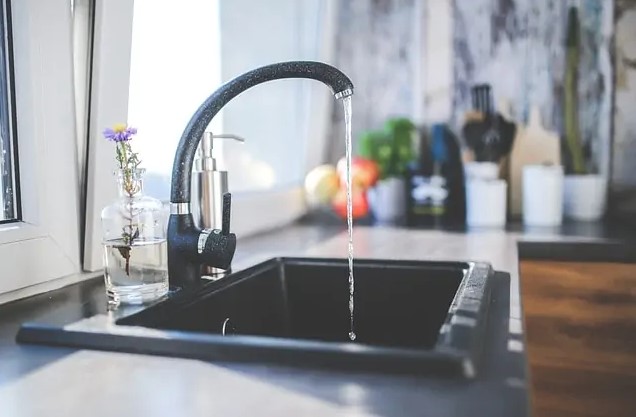Could Your Glass of Water Be Hiding Painkillers and Antibiotics?
This fact might surprise you, but did you know your glass of water might be hiding more than just H₂O? Yes, pharmaceuticals in drinking water have been detected in trace mounts. Now, you must be wondering, when water treatment plants do their best, how pharmaceutical contaminants in water still sneak through?
Let’s find out how these medicines end up in our water and what you can do about it.
How Do Pharmaceuticals End Up in Our Drinking Water?
On a regular basis millions of people take medications – pain relievers, antibiotics, antidepressants, etc. But actually your body does not absorb all of these drugs completely, as a result some amount gets excreted and heads straight into the sewage system.
But things don’t stop here. Even hospitals and pharmaceutical factories contribute to the problem, and how can you forget about those who even flush unused medications down the toilet. All of this adds up!
Of course, treatment plants do help, but if we see these are not designed to filter out these complex chemicals. This allows for some amount of pharmaceutical contaminants in water, including rivers, lakes, and, yes, even our drinking supplies.
What’s Actually in the Water?
Studies have detected the most common painkillers in water, including ibuprofen and naproxen, antibiotics, hormones, and even anti-anxiety medications. There is not doubt that these are present in extremely low concentrations, but it is very much there that remains an unchanged fact.
Some drugs can be easily broken down during water treatments like acetaminophen and codeine. While there are some like carbamazepine (an anti-epileptic) and diclofenac (a painkiller) that are stubborn and persist even after standard treatment processes.
Should You Be Worried?
See, here is what you need to know first – the levels of pharmaceuticals in drinking water are generally very low. As of now, there is no evidence that these race amounts are hazardous to your health.
So, why is this even a question? Because scientists are concerned about the “what ifs.” They have no proper answers for —
- What happens with lifelong exposure?
- Could sensitive groups, like children or pregnant women, be more at risk?
- What about the environment, where aquatic life is exposed to these substances continuously?
Why Are These Drugs So Hard to Remove?
Now, here’s where things get really interesting—and a bit frustrating, too. A lot of pharmaceuticals are actually designed to be super stable and resist breaking down in our bodies. The downside? That makes them pretty tough to remove from water as well.
Traditional water treatment methods, like sand filtration, flocculation, and sedimentation, just don’t do a great job of catching these sneaky little molecules. Some drugs can pass right through the treatment process, while others might hang around in the sludge that gets produced.
And guess what? That sludge often ends up being used as fertilizer, which means those pharmaceutical contaminants can spread from the water to the soil and beyond. It’s a bit of a cycle that’s hard to break!
How to Remove Pharmaceuticals from Water?
Here is some good news for all of us- scientists are actively working on solutions to help us clean our water from pharmaceuticals!
Activated Carbon Filtration
First, let’s talk about Activated Carbon Filtration. These filters act like super sponges, soaking up a wide range of drugs as water passes through them. Many water treatment plants are now using these filters, and they’re showing great results—some studies say they can remove almost all traces of certain medications!
Ozonation
Next up is Ozonation. Ozone is a strong chemical that can break down many drugs into harmless substances. In fact, ozonation can reduce the levels of painkillers and antibiotics by more than 90% in some cases. That’s a big win for cleaner water!
Advanced Oxidation Processes (AOPs)
Then we have Advanced Oxidation Processes (AOPs). These are high-tech methods that create special chemicals to completely break down tough pharmaceuticals into safe substances like water and carbon dioxide. While these technologies are still being developed, they look extremely promising for the future.
Home Solutions
If you want to clean your water at home, not all filters are the same. Basic carbon pitchers might not be enough to remove pharmaceuticals, but some advanced systems, like under-sink or whole-house filters that use activated carbon or reverse osmosis, can help reduce these contaminants.
What Can You Do at Home?
Here are a few tips that are going to help you a lot. –
- Avoid flushing unused medications. Instead, take advantage of pharmacy or community disposal events.
- Keep yourself informed about local water quality reports and treatment technologies.
- You must also consider a certified water filter if you’re especially concerned, but remember: no filter removes everything.
Bringing It All Together
So, while the idea of pharmaceuticals in drinking water might sound alarming, remember: the levels are tiny, and solutions are on the horizon. Now that you know how to remove pharmaceuticals from water, you can take action.
By staying informed, disposing of medicines responsibly, and considering the right water filter, you can do your part to keep your water safer. Scientists are working hard to tackle pharmaceutical contaminants in water, but every small step helps. Clean water is everyone’s right, and together, we can make sure our next glass is as pure as it looks—no hidden surprises included!
Read more about Fashion, Technology, Lifestyle and Latest News
Shop Now : Blue Realism Hoodie , Fish Hoodie

